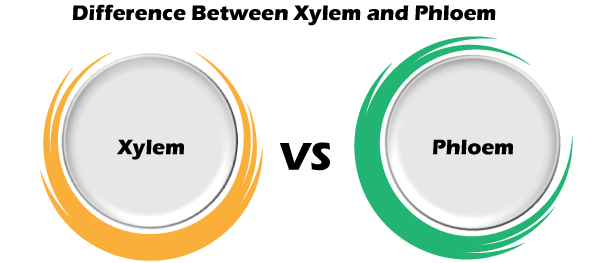Difference between Xylem and PhloemWe have often studied about various terms in our biology lectures that have made an impact on our minds. Biology is all about the human body and its systems. We have studied about various parts and systems of the human body like the digestive system, the nervous system, the muscular system, the endocrine system, etc. These systems combine together to make a human body. Apart from the human body, various tissues are found in the plants that are essential for carrying the process of photosynthesis. The main tissues in plants include the xylem and phloem. Now, you must be wondering as to what xylem and phloem are and what is the difference between the two terms. 
Well, xylem is defined as the material/ tissue found in the plant that is responsible for carrying the food and water from roots to its leaves and stems. On the other hand, phloem is considered as the tissue that carries various substances like sugar from leaves to the roots. Phloem helps in providing nutrients to the plants. Both xylem and phloem are vascular tissues. Now, what are vascular tissues? Well, vascular tissues help in the transportation of water, minerals, and other substances in plants from roots to leaves and vice-versa. Let us discuss the points of contrast between the xylem and phloem.
So, these are the fundamental points of contrast among xylem and phloem. Xylem and phloem are essential parts of a plant that helps the plant in growing and strengthening. Now, one question arises here regarding the xylem, i.e., are the cells of the xylem dead? Well, as mentioned above, xylem is made up of several dead cells. The chain of dead cells is called vessel elements. No specialized structures are present in the xylem, and this is the reason that they are considered dead. On the other hand, the cells of phloem are alive because sugar and amino acids are transported now and then. Thus, the tissues in the phloem are considered to be living. Well, it is interesting to note that the xylem is a very complex tissue as all the cells present in xylem are dead and hollow. The only living cell in the xylem is the parenchyma. Parenchyma works with the dead cell for transporting the food and water from roots to the leaves and stem of the plant. Now, you must be wondering as to what are the kind of plants that have xylem and phloem? Almost all the plants have both the xylem and phloem. But there are some exceptions. For instance, plants like algae and mosses do not contain xylem or phloem. Xylem and phloem are complex tissues as they have many functions to perform like transportation, strengthening, supporting the plants, etc. One of the significant examples of xylem and phloem is the tree trunk. The innermost part of the trunk contains a xylem, i.e., the deepest piece of the wood is dead. On the other hand, the outermost part of the tree is alive. Between the innermost and the outermost parts, the layers of phloem are present. The phloem is the living tissue responsible for the growth of the plant. Well, talking about the difference and examples, let us now put discuss the types of xylem and phloem. Types of Phloem:
Types of Xylem:
So, these are the significant kinds of xylem and phloem. Xylem and phloem are essential parts of a plant. The growth and strength of the plant depend upon the xylem and phloem. The major point of contrast between them is that the xylem comprises of dead cells while the phloem comprises of living cells. Thus, xylem and phloem are essential for the flowering and fruiting of a plant.
Next TopicDifference between
|
 For Videos Join Our Youtube Channel: Join Now
For Videos Join Our Youtube Channel: Join Now
Feedback
- Send your Feedback to [email protected]
Help Others, Please Share










